The Uffizi and the Vasari Corridor
Giorgio Vasari's masterpiece built in 6 months
The Vasari Corridor represents one of the most exclusive attractions among the artistic treasures of the city of Florence. A true architectural masterpiece built in the 16th century in just over six months. A flight of more than 1 km between buildings, streets of the historic city center and the Arno river.
On the occasion of the wedding of Cosimo's son, Francesco with Giovanna of Austria, Cosimo decided to connect Palazzo Vecchio, the Uffizi and Palazzo Pitti, the new, spectacular town residence of the Medici, with an elevated passage. In just six months Vasari was able to design and build the Vasari Corridor also known as the Prince's Path, a long raised corridor of over 1 km that connects the 3 Medici palaces with air bridges and secret passages. The fabulous route would have allowed the Grand Duke to move undisturbed between Palazzo Vecchio and the Boboli Gardens without being seen and safely reach Forte Belvedere.
In 1574 Vasari died and the work on the Palazzo degli Uffizi continued under the direction of Alfonso Parigi and Bernardo Buontalenti: the latter completed the construction of the building, also connecting it with the Loggia dei Lanzi in 1580.
In 1581 Francesco I, son of Cosimo now in power, decided to close and use the loggia on the top floor as a personal art gallery where he could collect his splendid collection of fifteenth-century and contemporary paintings, to which cameos, medals, stones, hard stones, ancient statues, works of high goldsmithing, bronzes, armor, miniatures were added. Later Francesco I decided to allow visitors to admire the collection on request. This makes the Uffizi one of the oldest museums in Europe.
In 1583 Francesco I decided to transform the terrace, above the Loggia dei Lanzi, into a hanging garden, which has now disappeared. There the court gathered to listen to musical performances and other entertainment.
In 1584 Buontalenti built the Tribuna in the long arm of the Uffizi, drawing inspiration from the Torre dei Vento in Athens, described by Vitruvius in the first book De Architectura to give prestige and prestige to the Medici collection. The Tribuna is an octagonal environment, with a muffled and enveloping atmosphere, with a floor inlaid with polychrome marble, walls lined with red velvet and a domed ceiling completely encrusted with six thousand Indian Ocean mother-of-pearl shells that sparkle on a lacquer background crimson red.
Galleria degli Uffizi
Scopri di più
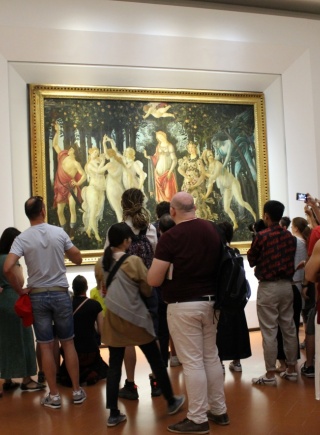 What is the Uffizi museum - the most visited museum in Florence
The Uffizi museum or more correctly the Uffizi Gallery is a state museum located in Florence, in the homonymous building.The Uffizi are undo...
Read More
What is the Uffizi museum - the most visited museum in Florence
The Uffizi museum or more correctly the Uffizi Gallery is a state museum located in Florence, in the homonymous building.The Uffizi are undo...
Read More
 History of the Uffizi Museum in Florence
The Uffizi and the Medici a long and fascinating history that forever binds one of the most important museums in the world to the Medici dyn...
Read More
History of the Uffizi Museum in Florence
The Uffizi and the Medici a long and fascinating history that forever binds one of the most important museums in the world to the Medici dyn...
Read More
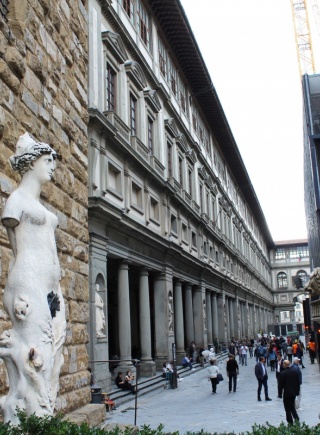 The Palazzo degli Uffizi in Florence - the seat of the Museum
Visiting the Uffizi Gallery in Florence is not just admiring the art treasures that the Florentine museum contains. The Palazzo degli Uffizi...
Read More
The Palazzo degli Uffizi in Florence - the seat of the Museum
Visiting the Uffizi Gallery in Florence is not just admiring the art treasures that the Florentine museum contains. The Palazzo degli Uffizi...
Read More
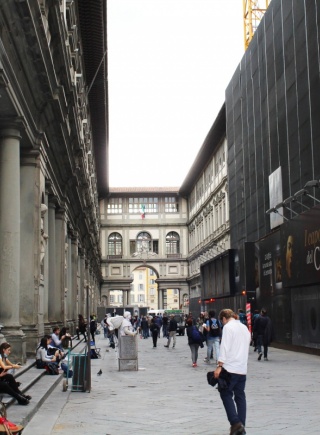 Where are the Uffizi and how to get there
The Uffizi Gallery is located in the historic center of Florence, between Piazza della Signoria and Ponte Vecchio, therefore in the heart of...
Read More
Where are the Uffizi and how to get there
The Uffizi Gallery is located in the historic center of Florence, between Piazza della Signoria and Ponte Vecchio, therefore in the heart of...
Read More
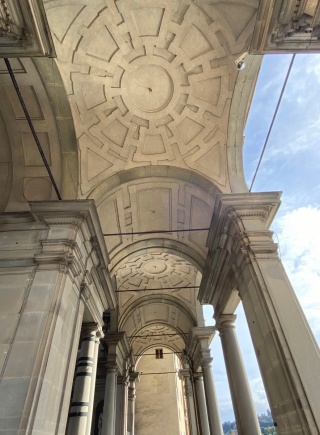 Why it is important to book a visit to the Uffizi in advance
The Uffizi Museum is undoubtedly one of the most visited places of culture in Europe and therefore always besieged by thousands of tourists....
Read More
Why it is important to book a visit to the Uffizi in advance
The Uffizi Museum is undoubtedly one of the most visited places of culture in Europe and therefore always besieged by thousands of tourists....
Read More
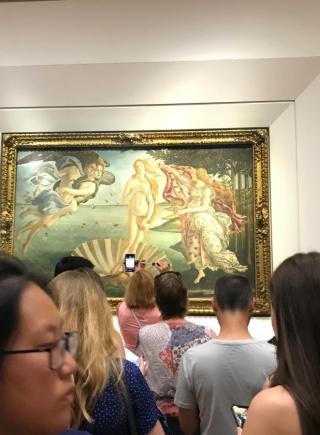 Tour Privato alla Galleria degli Uffizi
This is a personalized experience in close contact with the museum in the company of an art historian. The private guided tour lasts about 3...
Read More
Tour Privato alla Galleria degli Uffizi
This is a personalized experience in close contact with the museum in the company of an art historian. The private guided tour lasts about 3...
Read More
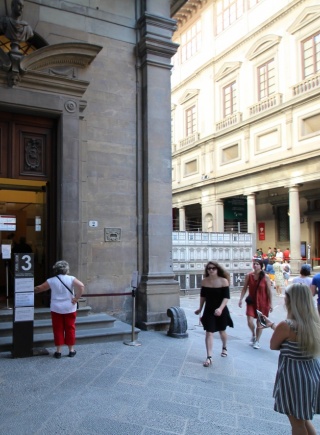 Services and useful information on the Uffizi Museum
The Uffizi museum in Florence has been recently renovated, enlarged and refurbished to allow visitors to make the most of the museum spaces....
Read More
Services and useful information on the Uffizi Museum
The Uffizi museum in Florence has been recently renovated, enlarged and refurbished to allow visitors to make the most of the museum spaces....
Read More
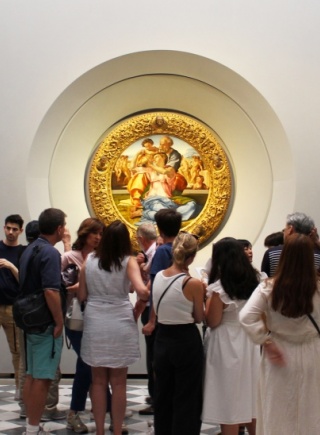 How to organize a visit to the Uffizi Gallery in Florence
What to book to see the Uffizi? How much does it cost to enter the Uffizi? these are questions that do not correspond to a single answer.In...
Read More
How to organize a visit to the Uffizi Gallery in Florence
What to book to see the Uffizi? How much does it cost to enter the Uffizi? these are questions that do not correspond to a single answer.In...
Read More
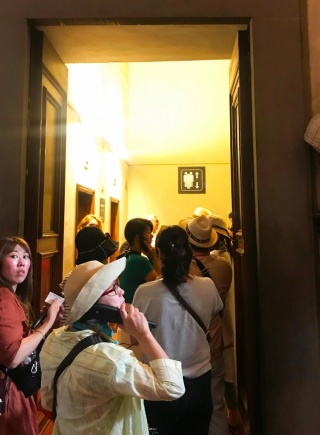 Facilitated routes at the Uffizi Gallery in Florence
The Uffizi Gallery offers an easy access for disabled visitors. By presenting the certificate of disability, you are entitled to free access...
Read More
Facilitated routes at the Uffizi Gallery in Florence
The Uffizi Gallery offers an easy access for disabled visitors. By presenting the certificate of disability, you are entitled to free access...
Read More
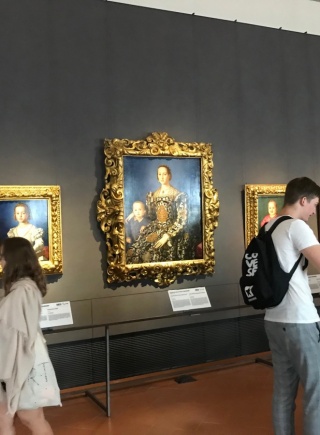 Visit the Uffizi Gallery by booking a guided tour
Those who wish to live a more complete experience by visiting the Uffizi can decide to be accompanied on the tour by a guide in flesh and bl...
Read More
Visit the Uffizi Gallery by booking a guided tour
Those who wish to live a more complete experience by visiting the Uffizi can decide to be accompanied on the tour by a guide in flesh and bl...
Read More
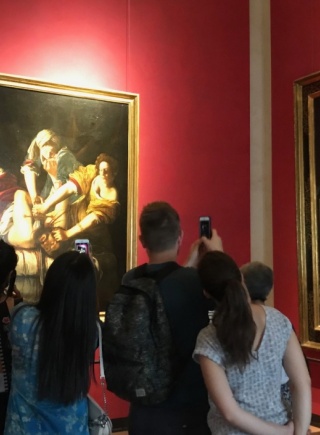 When is it advisable to visit the Uffizi Museum?
In 2019, the Uffizi Gallery in Florence was confirmed as the most visited museum in Italy and ranks in the world top ten of the most visited...
Read More
When is it advisable to visit the Uffizi Museum?
In 2019, the Uffizi Gallery in Florence was confirmed as the most visited museum in Italy and ranks in the world top ten of the most visited...
Read More
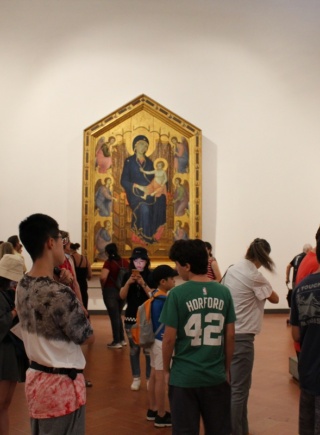 Uffizi Gallery, visit the museum with the audio guide
At the Uffizi Gallery it is also possible to rent an audio guide at a cost of 7 euros combined with a skip-the-line entrance ticket. By rent...
Read More
Uffizi Gallery, visit the museum with the audio guide
At the Uffizi Gallery it is also possible to rent an audio guide at a cost of 7 euros combined with a skip-the-line entrance ticket. By rent...
Read More
The Uffizi Gallery houses the largest collection of paintings from Romanesque period to the 18th century. Nowadays the Uffizi still accommodates famous masterpieces exhibited in chronological order

